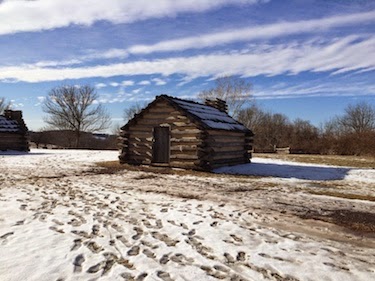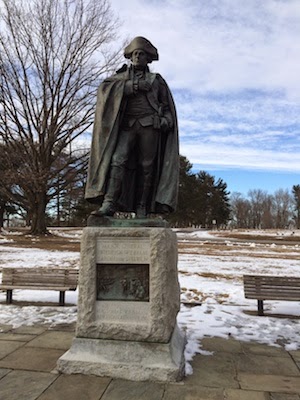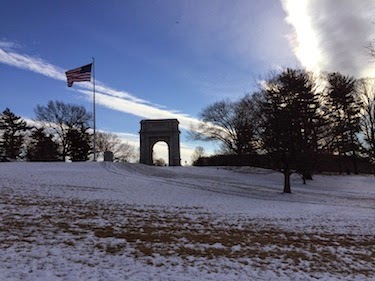War was fought much differently in the 18th century than today. Once the weather turned cold, armies went home or simply put themselves up somewhere to wait until the weather turned nicer and fighting could resume. It was called “winter quarters”, and it was one of the main reasons that General George Washington’s sneak attack across the Delaware on Christmas day, 1776, was successful: such things just weren’t done. But Washington often fought by different rules than the British, as he fully intended to win.
Unfortunately, the ensuing year of 1777 wasn’t as successful as that sneak Christmas attack for Washington’s army and the nascent United States of America. Throughout 1777, both sides enjoyed wins and suffered losses, but the Americans lost Fort Ticonderoga in early July and Philadelphia in the end of September. The loss of the nation’s capital was as much a morale victory for the British as a strategic one, but as the fighting season wound down and both armies prepared for winter quarters, Washington encamped at Valley Forge, just twenty miles west of occupied Philadelphia. Britain’s General Howe was almost certainly ill at ease with Washington’s site selection. Many historians have argued that, had Howe attacked Washington’s battered army then, the Revolutionary War would have been ended, but Howe settled quietly in for the long winter and waited patiently. It was a big mistake, for sure.
 |
| Log Troop Hut at Valley Forge |
As winter set in, Washington’s army did what they did best: they built. They dug in. Valley Forge became a city of log troop huts. Redoubts were constructed, with cannons (captured from the British at Fort Ticonderoga) pointed at Howe’s army over in Philadelphia. Often during winter quarters, top commanding officers went home. Not only did Washington stay with his troops at Valley Forge, but Martha came to join him. He spent the winter with his troops, regularly riding his horse Nelson among them, talking with them, encouraging them, if only by his inspiring presence.
As Americans have been taught for the past couple of centuries, nobody could have anticipated the bitter winter the American army would have to endure. The harsh weather, coupled with poorly managed supply lines and disease, led to the death of 2,500 soldiers at Valley Forge. But Washington made two personnel decisions that quite likely changed the course of the war.
First, Washington appointed Nathanael Greene as Quartermaster General, replacing Major General Thomas Mifflin. Greene was self-taught in military tactics and loathed the role of quartermaster, but Washington promised him a dual combat command to entice him to fix the army’s supply problems. Greene poured himself into the task and managed to supply the army with food for the men, food for the horses, clothing, blankets, and more.
Second, Washington appointed Prussian-born Friedrich von Steuben as the army’s inspector general. America’s new inspector general was a skilled drillmaster and expert in the tactical arts. He developed and executed a training program that standardized their battle movements and formation techniques, and tireless drills not only kept the troops occupied and focused through the winter but also dramatically increased their skill levels, their efficiencies, and (perhaps most importantly) their confidence.
The army that emerged from winter quarters at Valley Forge was greatly reduced in numbers, but they were better supplied, well-trained, and carried high morale.
 |
| Statue of Major General Friedrich Wilhelm (Baron von Steuben) |
The day we visited Valley Forge, it was still cold–in the 20’s–and windy. The heavy snow from the week before had begun to melt and had refrozen in places. It was hard to imagine what it was like to live here for months on end, with little food, not enough shoes to go around, and disease running rampant. Walking across the frozen, crunchy grass of Valley Forge, it occurred to me that it requires a nearly inconceivable amount of dedication to a cause to endure such hardships.
It felt great to be an American that day.
 |
| Memorial At Valley Forge |






